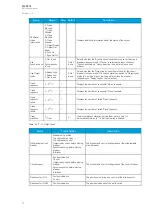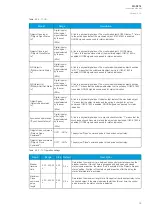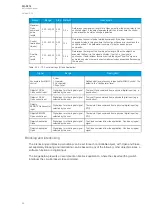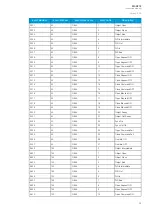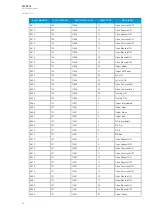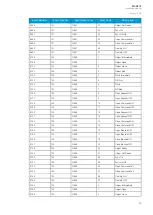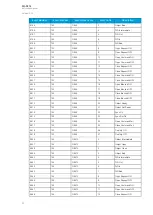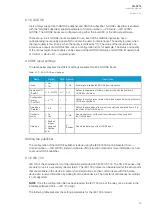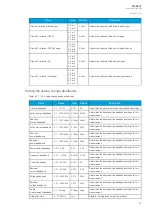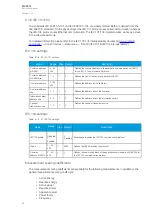
Event Number
Event channel
Event block name
Event Code
Description
6721
105
CIN2
1
Open
6722
105
CIN2
2
Close
6723
105
CIN2
3
Bad
6784
106
CIN3
0
Intermediate
6785
106
CIN3
1
Open
6786
106
CIN3
2
Close
6787
106
CIN3
3
Bad
6848
107
CIN4
0
Intermediate
6849
107
CIN4
1
Open
6850
107
CIN4
2
Close
6851
107
CIN4
3
Bad
6912
108
CIN5
0
Intermediate
6913
108
CIN5
1
Open
6914
108
CIN5
2
Close
6915
108
CIN5
3
Bad
5.2.4 Milliampere output control
The milliamp current loop is the prevailing process control signal in many industries. It is an ideal
method of transferring process information because a current does not change as it travels from a
transmitter to a receiver. It is also much more simple and cost-effective.
The benefits of 4...20 mA loops:
• the dominant standard in many industries
• the simplest option to connect and configure
• uses less wiring and connections than other signals, thus greatly reducing initial setup costs
• good for travelling long distances, as current does not degrade over long connections like
voltage does
• less sensitive to background electrical noise
• detects a fault in the system incredibly easily since 4 mA is equal to 0 % output.
Milliampere (mA) outputs
AQ-200 series supports up to two (2) independent mA option cards. Each card has four (4) mA output
channels and one (1) mA input channel. If the device has an mA option card, enable mA outputs at
Control
→
Device IO
→
mA outputs. The outputs are activated in groups of two: channels 1 and 2 are
activated together, as are channels 3 and 4 (see the image below).
Figure. 5.2.4 - 49. Activating mA output channels.
A
AQ
Q-S214
-S214
Instruction manual
Version: 2.04
70


